
Tennis Elbow Means Aching Tendons
Tennis elbow, or lateral epicondylitis, is extremely aching tendonitis that sometimes badly affect an elbow subjected to too much stress, for instance related with tennis.
Tennis elbow is a condition brought about by swelling of the tendons on the outer surface (lateral side) of the elbow at a bony prominence (lateral epicondyle) of the upper arm.
This is normally as a consequence of overuse or a specific strain, such as over extending the elbow, or put another way, straightening the arm too quickly or with too much force.
It does not normally lead to serious harms. However, if left untreated, failure of movement can result to elbow and forearm malfunctions.
Why does one get tennis Elbow?
Exactly what causes tennis elbow is unidentified, although it is thought to be for the reason that there are inflammation of the tendon and occurrence of small tears of the tendons that are attach to the muscles of the forearm to the arm bone at the elbow joint.
As much as anything, it is caused by a one handed backhand with poor technique, or the snap caused by coming late to a forehand shot, or a fast service where wrist pronation increases the wrist snap.
There are quite a number of ideas that tennis elbow is not just simply an “inflammation” of the tendons around the joint.
Furthermore, it is thought of as related to a person’s degenerative process. It can either be the result of becoming old or repetitive use.
It can be an outcome of an incomplete curative response in absence of good blood circulation. Consequently access to nutrients and oxygen that is essential for healing is deprived to the sufferer. This results to the deterioration of the tendon that cause the small tears.
Symptoms of Tennis Elbow
Symptoms of tennis elbow include:
- Tenderness over the inflamed area and acute pain when the elbow is stressed. The pain connected with tennis elbow more often than not has a gradual onset, although it may as well come on suddenly.
- Difficulty to hold, squeezes, or clasp things
- Point softness at or around area of the lateral or medial elbow muscles
- Forearm muscle stiffness
- Soreness, stiffness, or not enough elbow and hand action
- Not enough forearm useful power
- Recurring pain on the outside of the upper forearm just below the bend of the elbow; occasionally, pain may radiate down the arm toward the wrist.
- Pain caused by lifting or bending the arm or grasping even light objects.
- Difficulty extending the forearm fully (because the inflamed muscles, tendons and ligaments do not want to bend).
- Pain that typically lasts for 6 to 12 weeks; the discomfort can continue for as little as 3 weeks or as long as several years.
The symptoms of Tennis Elbow are quite simply pain on the outer part of the elbow, and gripping and movements of the wrist hurt, especially wrist extension and lifting movements. Put another way lifting a cup of tea, or a glass of beer will hurt, and it will be impossible to throw a ball without elbow pain running down the forearm.
Whom does it affect?
Most sufferers of tennis elbow are between 35-65 years old. Both men and women have the same chance of being afflicted with it. Tennis elbow inflicts 75% of patients dominant arm. Any person is capable of being affected, but tennis elbow is in general noticed in two sets of patients, namely:
Just about everyone calls it tennis elbow, but it is not only tennis players who suffer from it. In fact anyone who lifts a lot in their job, or uses their wrist in repeated movements are susceptible to tennis elbow. In this way it is almost a repetitive strain injury.
- Blue-Collar Workers: People who use their hands in working, manual laborers, they are in danger of being affected tennis elbow. Occupations that may lead to tennis elbow include plumbing, painting, gardening, and carpentry works.
- Athletes: Athletes engaging in racquet sports are most likely to develop tennis elbow. Most certainly about 1/3 of regular tennis players suffer from tennis elbow at any time in their playing career. In addition, tennis elbow is also evident in those engaged in playing golf, and fencing, to name a few.
- It is important to realise that over 50% of all tennis players will suffer from Tennis Elbow at some time. Having said that, the vast majority of all cases of tennis elbow don’t involve tennis players at all.
How to Know if You Have Tennis Elbow
You are in great physical condition and play tennis every weekend with friends when the weather is nice. You have even joined a tennis club to have access to better inside courts.
But you keep feeling pain in your elbow and can not figure out why. And it becomes severe over time. In that case, you could be suffering from Tennis Elbow.
Tennis elbow occurs when tiny tears occur in a certain part of the tendon and in the muscle coverings. Even after letting everything heal and taking care of your injury, you will be prone to this condition for the rest of your life.
If you had only taken the time to know about tennis elbow, you may have been able to avoid the problem. There are exercises specifically designed to strengthen the arm muscles used when playing tennis. If you had just known about this preventative process, you would have been able to do these before playing. Very much like the stretching you do before jogging-you warm up the muscles and get them ready.
Now you know what to do, its important to take better care of yourself. Let your initial injury heal all the way-not just when you think it is better, but after the doctor gives his approval for you to play again. Then, try a warming up the muscles first or wearing a band around your forearm just below the elbow. The extra support provided by the band may help or hurtask your doctor for his opinion.
Take the time to get better, and hopefully you will out on the tennis court again enjoying yourself without the worry of another injury.
Golfers Elbow Or Tennis Elbow: How to Differentiate?
Golfers and tennis players are susceptible to conditions that are very similar to each other; they are called golf elbow and tennis elbow. Sometimes it may be a little hard to tell the difference between the two conditions. But there are signs that can distinguish between the two.
- If you notice that trying to pick something up or simply just moving your elbow is painful, then you may be suffering from tennis elbow. This condition affects the back side of your arm between your elbow and hand. This is why trying to pick something up is painful. If the outside of your elbow feels tender to the touch and you feel discomfort when picking up items with this hand, chances are good you have tennis elbow.
- If moving your elbow or trying to lift something upwards causes pain that runs from the inside of your elbow to the inside of your wrist then, this is a good sign you have golf elbow. This condition is seen more frequently because it affects the muscles on the inside of your arm which pulls the wrist in. Golfers elbow can also be associated with neck pain so you if you have not done anything to overwork your arm, the problem may be caused by a neck condition. An injury or a medical condition such as arthritis can also cause you to have this condition.
For both golf and tennis elbow, the treatment is generally R-I-C-E; rest, ice, compress and elevate along with taking some anti inflammatory medications. However, a proper diagnosis is always recommended from a medical professional.
A differential diagnosis of tennis elbow is important, for it is easily confused with Golfer’s Elbow, and Bursitis.
The pain with Golfer’s elbow is on the inside and not the outside of the elbow. The pain with Bursitis is at the back of the elbow, and is often caused by a direct blow or a fall onto the tip of the elbow.
Tennis Elbow Diagnosis, Treatment, And Prevention
When attempting to diagnosis tennis elbow, a doctor or physical therapist will test for tenderness on or near the bony knob of the elbow joint. Pain that increases when bending the wrist back is also indicative of tennis elbow. Tennis elbow related pain also increases when gripping. Thus, shaking hands may be painful. Finally, a perception of weakness or chronic muscle fatigue in the forearm muscles is an indicator of tennis elbow.
Treatment for tennis elbow is usually conservative and passive. Most importantly, people with tennis elbow should avoid the activities that cause forearm pain (e.g., playing tennis) until the injury heals. Rest will often correct tennis elbow in a matter of weeks.
In addition, the use of ice and anti-inflammatory medications can ease pain and promote healing. Physical therapy and heat therapy may also hasten the healing process. Finally, upon returning to regular activity, wearing an elbow and forearm brace can prevent recurrence of tennis elbow. Elbow braces, available at drug stores, help prevent tennis elbow by restricting movement and use of the elbow.
Because treatment of tennis elbow and recovery from tennis elbow can be a long, frustrating process, prevention is the best strategy.
For tennis players, several equipment adjustments can help prevent tennis elbow. Players should select a racket with a midsized racket head (90 – 105 square inches) and high flexibility (stiffness index lower than 65). Additionally, players should string their rackets with soft strings such as synthetic nylon or natural gut at the low end of the recommended tension range. Finally, to prevent tennis elbow, players should ensure that the grip of their racket is neither too large nor too small. Playing on hard courts add to the possibility of tennis elbow occurrence. Stroke technicalities ought to be assessed to make sure that the ball hit the ball at the middle of the racquet and also the racquet must not be lead by the players on bended elbow.
Wearing of elbow orthosis or elbow clasp help the sufferer. The brace of the elbow clasp will pass on the pull of misaligned muscles. This clasp is proven to relieve the pain during activities.
Besides equipment adjustments, tennis players (and others) attempting to prevent tennis elbow can follow several guidelines related to physical activity. Easy exercises can be valuable in managing elbow tennis symptoms. These workouts must cause no ache, on the other hand, the exercise is supposed to be stopped if pain persists. The tendons and muscles must be toughen as it help keep away its recurrence.
First, strengthening the muscles of the hand, wrist, and forearm is perhaps the best way to prevent tennis elbow. Strengthening these muscles helps reduce strain on the elbow itself. Appropriate and effective wrist and forearm exercises include wrist curls and extensions (with very light weights), squeezing a tennis ball in the palm of the hand, and placing a rubber band around the fingers and extending the fingers. In addition to strengthening exercises, it is important that tennis players consult a tennis professional to ensure that their strokes are efficient, correct, and are not placing undue strain on the elbow.
The disorder is treated by avoiding stress, or in severe cases, by immobilizing the elbow. Healing may be accelerated by anti-inflammatory drugs or by injection of an adrenal steroid preparation such as hydrocortisone. If someone has tried more than two cortisone injections with no relief, it is doubtful that additional injections will help the patient.
There are a number of ways to treat tennis elbow. Nonoperative healing is doing well in majority of patients. Modification of lifestyle is vital for tennis elbow to be cured and to control its recurrence. Anti-inflammatory drugs are frequently used to relieve pain and swelling associated with tennis elbow.
Tennis Elbow Injury Rehabilitation
Rehabilitation for a tennis elbow injury will require patience. But how long is the rehabilitation for my tennis elbow going to take? The answer to that is ”As long as it takes!!”
In terms of tennis elbow rehabilitation, there is one absolute rule. You must do nothing until you are experiencing little or no pain, and then the rehabilitation process, and exercises can only proceed providing you have no pain in whatever exercise you are doing.
Before you can start playing tennis properly again you must have restored full strength and mobility to your elbow.
There are three different phases to your tennis elbow rehabilitation, and they can be summarized as follows.
The first phase is to reduce inflammation and pain. You need to do two things here, and the first is to begin the healing process whilst also preventing the associated muscles from wasting.
The process here has four distinct parts.
- Rest which means avoiding overusing the injury.
- You must continue to use the muscles to ensure they don’t waste, and a good blood supply is maintained. The activity must not be painful, if it hurts don’t do it!!
- Use Ice all the time until you return to full use, as it lessens inflammation.
- Use compression and elevation as it helps the blood supply and also reduces swelling.
In the second phase of tennis elbow rehabilitation, exercise comes into play. It is important to increase your elbow strength, and endurance. You need to get the elbow to function again properly.
This flexibility is achieved primarily by extending the elbow gently without flexing it, and holding the extended position for up to 30 seconds, but NOT to the point of pain, and doing this perhaps twenty times a day.
To strengthen the elbow, sit with your elbow on your knee, and with a weight not exceeding 1 lb. In your hand, and palm downwards flex your wrist up and down slowly. Note that the elbow shouldn’t move at all. Do exactly the same thing with your palm facing upwards.
Another useful exercise is to use a tennis ball, and squeeze it in your hand, and keep doing this. Remember that there should be no pain.
You should gradually increase the weight as your strength grows, and always use an ice pack afterwards.
The third phase is where you gradually return to playing whilst maintaining and increasing the second phase.
In terms of playing you shouldn’t start until your symptoms are gone, but what you can do in combination with flexibility exercises is to just hit gentle forehands in succession and repeat this with backhands and lobs. If you start with fifteen minute sessions, and increase it to an hour, and you get no pain, then you can start to serve, and then return to competitive tennis.
Remember that in Tennis Elbow Rehabilitation there is no gain with pain!!
Tips To Avoid Tennis Elbow
Here are some tips that you should follow to avoid getting Tennis Elbow.
Take adequate rest
You are first going to want to focus on prevention, which means you need to ensure that you are getting the rest you need between playing. This means there is no reason that you should go out and play a 4-hour tournament then turn around and practice for another 2 hours. No matter what you think, this is not a wise idea. Rather a better idea would be taking the day off after you have finished the tournament so that you can give your arm the rest that it needs.
Stretch
Always stretch before you start playing a game or even practice. In addition, you should stretch after you are done playing as well. This will allow you to keep the muscles surrounding the tendon as supple as possible. Often tense muscles can help factor into a tendon injury and will have you in pain quite quickly if you forget to stretch one day. A few minutes of stretching can go a very long way towards keeping you in good shape and injury free.
Get into good physical shape
This includes ensuring that you strengthen your arms and back. If you ensure that your arms and back are in good physical condition you will have the muscle strength built up that will help you to prevent the injury. However, failing to make sure you are in good physical condition can make you exceptionally vulnerable to problems.
Avoid continuously repetitive movements
If you are practicing a swing or a serve then that is wonderful but at the same time, you need to ensure that you stop on occasion to take a break. This will be quite helpful in working with you to avoid injury. If you are overworking your muscles without a break, you are putting yourself heavily at risk of an injury and you are not likely to enjoy the results.
Tennis Elbow Videos
Here are some useful videos on Tennis Elbow treatments:
Watch: Acupressure 101 : Acupressure & Tennis Elbow
Watch: Acupuncture Treatments: Acupuncture for Elbow Tendinitis
Watch: How to Strengthen a Tennis Elbow (Strengthening Exercises)
Watch: Stretches & Strengthening Exercise for Tennis Elbow
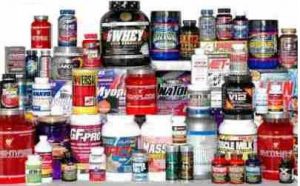


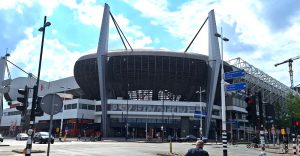
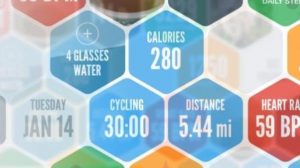
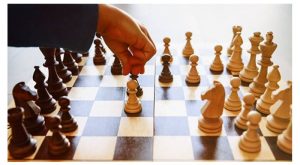
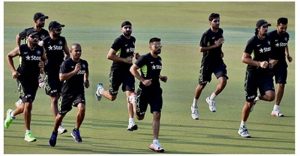
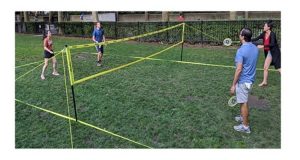

Leave a Reply